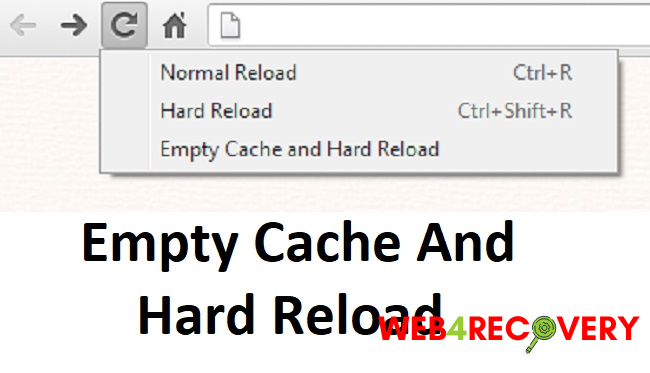As you browse the web, your browser caches or stores certain types of data like images, scripts, and stylesheets to enhance your browsing experience by loading web pages faster.
Over time, however, this cache can cause some issues, such as displaying outdated content or causing site loading errors. That’s when you might need to perform an ‘Empty Cache And Hard Reload’ operation.
In this in-depth guide, we will explore how to Empty Cache And Hard Reload in Google Chrome, understand the causes that require such an action, and discuss the steps for other browsers such as Firefox and Chrome for Mac.
We will also touch on how to do it for Javascript and share the shortcuts that make the process even easier.

How to Empty Cache And Hard Reload in Google Chrome
Emptying cache and hard reloading in Google Chrome can be done by following these simple steps:
- Open DevTools: Press
Ctrl + Shift + I(orCommand + Option + Ion a Mac) to open Chrome’s Developer Tools. - Right Click on Reload: Once DevTools is open, right-click on the reload button next to the address bar.
- Choose ‘Empty Cache And Hard Reload’: A small dropdown menu will appear with three options. Choose ‘Empty Cache And Hard Reload.’
By doing this, Chrome will clear all the cached data for that specific website and reload the page with fresh data.
Causes for Needing to Empty Cache And Hard Reload
There are several reasons why you might need to perform an Empty Cache And Hard Reload operation:
- Website Updates: If a website has recently been updated, your browser might still load outdated data from the cache, causing discrepancies between what you see and the most recent version of the site.
- Debugging: While debugging a website, it’s crucial to work with the latest data. Cached data can sometimes interfere with this process, leading to confusion or incorrect results.
- Site Loading Errors: If a site isn’t loading properly, the problem could lie in the cached data. Emptying the cache and reloading the page can often resolve these issues.
How to Empty Cache And Hard Reload in Firefox
In Firefox, the process of emptying cache and hard reloading a page is quite straightforward:
- Open Developer Tools: Press
Ctrl + Shift + I(orCommand + Option + Ion a Mac) to open Firefox’s Developer Tools. - Choose ‘Network’: Click on the ‘Network’ tab.
- Tick ‘Disable Cache’: On the right side of the toolbar in the ‘Network’ panel, tick the ‘Disable Cache’ checkbox. This will ensure the cache is bypassed while the Developer Tools are open.
- Reload the Page: Close the Developer Tools and reload the page for a hard refresh.
Empty Cache And Hard Reload on Chrome for Mac
Performing an Empty Cache And Hard Reload on Chrome for Mac involves the same steps as Chrome on Windows:
- Open DevTools: Press
Command + Option + Ito open Chrome’s Developer Tools. - Right Click on Reload: With DevTools open, right-click on the reload button.
- Choose ‘Empty Cache And Hard Reload’: Select ‘Empty Cache And Hard Reload’ from the dropdown menu that appears.
Performing an Empty Cache And Hard Reload for JavaScript
When you’re debugging or testing changes in JavaScript, cached data can sometimes cause confusion.
To ensure you’re working with the most up-to-date version of your JavaScript files, you may need to perform an Empty Cache And Hard Reload. The process is the same as described above for Google Chrome.
Empty Cache And Hard Reload Shortcut
If you find yourself frequently needing to Empty Cache And Hard Reload, there’s a shortcut that can make the process faster. With DevTools open in Chrome, you can simply press Ctrl + Shift + R (or Command + Shift + R on a Mac) to perform a hard reload and bypass the cache.
Conclusion
Understanding how to empty cache and perform a hard reload is crucial for web developers, designers, and regular internet users alike.
Whether you’re debugging a website, testing changes, or just trying to get the latest version of a website, these steps will help you achieve your goal. Remember to use the handy shortcuts to make your workflow even more efficient.

















